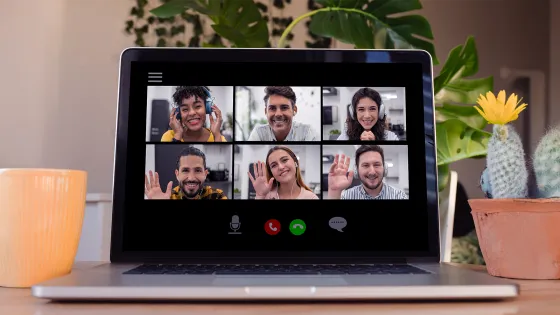Kickstarting hybrid meetings with Microsoft Teams Rooms
One of Microsoft's most recently anticipated launches has been Microsoft Teams Rooms in response to growing hybrid work styles.
Microsoft Teams Rooms is a hybrid meetings solution that combines MS Teams, with MS accredited audio and video devices designed to enhance hybrid meetings and provide in-room participants with greater Teams Rooms meeting experience irrespective of location whether online, home, or remotely.
Everything wrong with hybrid meetings today
Hybrid meetings create imbalances in knowing how one is perceived, visibility of conversational cues, access to technology and resources, and distribution of power.
It is hard for remote participants to hear concurrently, talk, and see individuals in a local room.
- It is difficult for remote people to engage with physical resources in a local room.
- It is hard for local groups to do things in parallel with remote people.
- It is hard to know how engaged remote people are in the meeting.
Remote participation in hybrid meetings is more disadvantageous for new or junior attendees and minorities of culture, geography, identity, physical ability, health, neurodiversity, etc.
What is a Hybrid meeting and why are they important?
Hybrid meetings are defined as a meeting where participants are located both in and out of the room. With the transition to hybrid working, the need for hybrid meetings has increased and as such the way in which we meet has been changed forever.
Up until recently, organisations would typically have a video conferencing room that was used by employees to conduct meetings with other organisations. These rooms often had a complex setup that was costly to purchase and difficult to support. With the advancement of Unified Communications platforms like Microsoft Teams, these solutions began to fall behind and were often ignored altogether. I'm sure we've all experienced the wasted 20 minutes of failing to get the video conferencing solution to wake up and instead ended up huddled around a laptop/mobile phone?
With the pandemic forcing many organisations to transition to home working, users flocked to online meeting tools like Cisco WebEx, Zoom, and Microsoft Teams. These tools were easy to use, low cost, and feature-rich, all offering a new way to conduct meetings. Microsoft saw a huge upswing in Teams users and reported over 2.7 million monthly meeting minutes consumed in 2020.
Now that some workers are returning to the office, organisations need to be able to provide a meeting experience that matches that of when they were working remotely. With increasing expectations employees will not tolerate clunky, hard-to-operate systems, when they have become accustomed to the tools that they have been using over the last 12 months. Providing a homogenous meeting experience for all users regardless of their location will be a key focus for organisations in 2022.
The importance of hybrid meetings increases as workforces become more agile. As meetings no longer need to be held in person, it's crucial that both users in and out of the room feel engaged and that they are active participants. This can be achieved by incorporating video, digital whiteboards, content sharing, and many other features. By providing users with these tools, you can empower the workforce and encourage a culture of collaboration and productivity.
One of the biggest challenges facing organisations right now is how they transition to this new way of working as they map out their plans for returning to the office? That's where we come in, if hybrid meetings are a focus of your organisation, or you want to hear more about how Claranet can help transition your organisation to a modern workplace, speak to a workplace expert today.
Related articles

End Of Support FAQs: answering your biggest Microsoft 365 migration questions

How to migrate to Microsoft 365 without disrupting your business

The true cost of ignoring Microsoft EOS

Microsoft Exchange, SharePoint and Windows 10 EOS: What are your options?

What Microsoft End of Support (EOS) really means for your business (and why you should act now)
